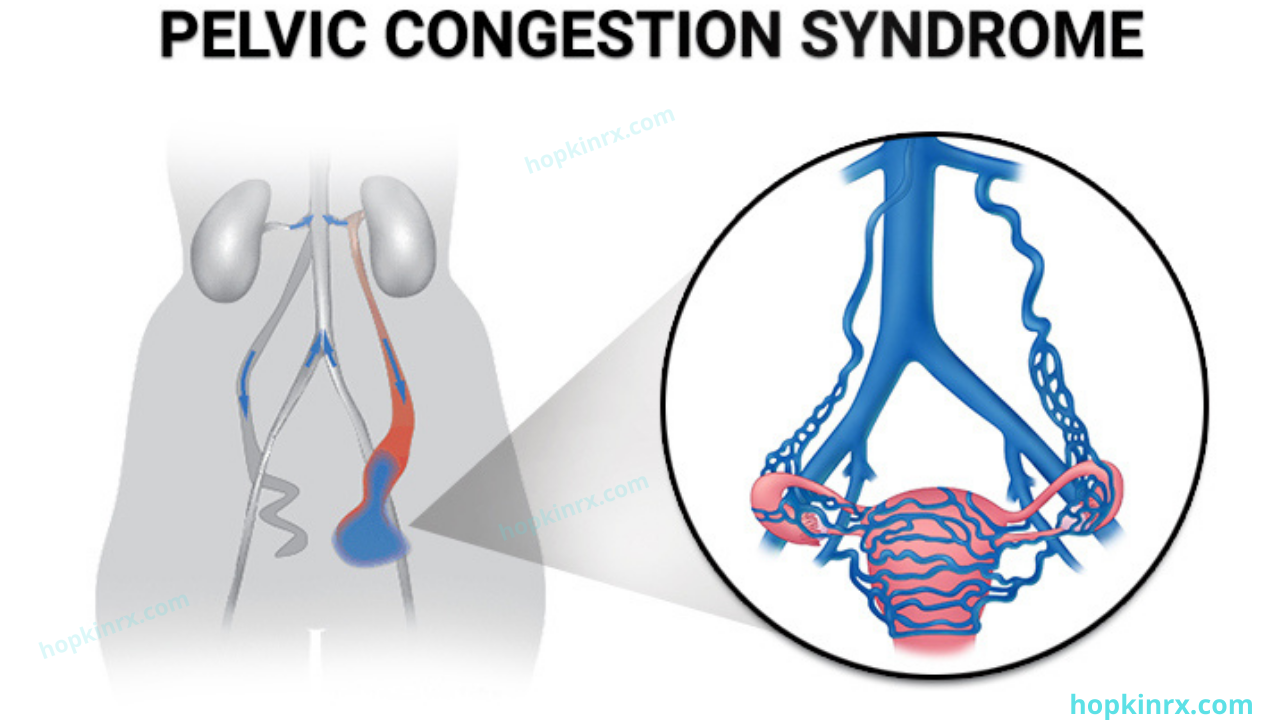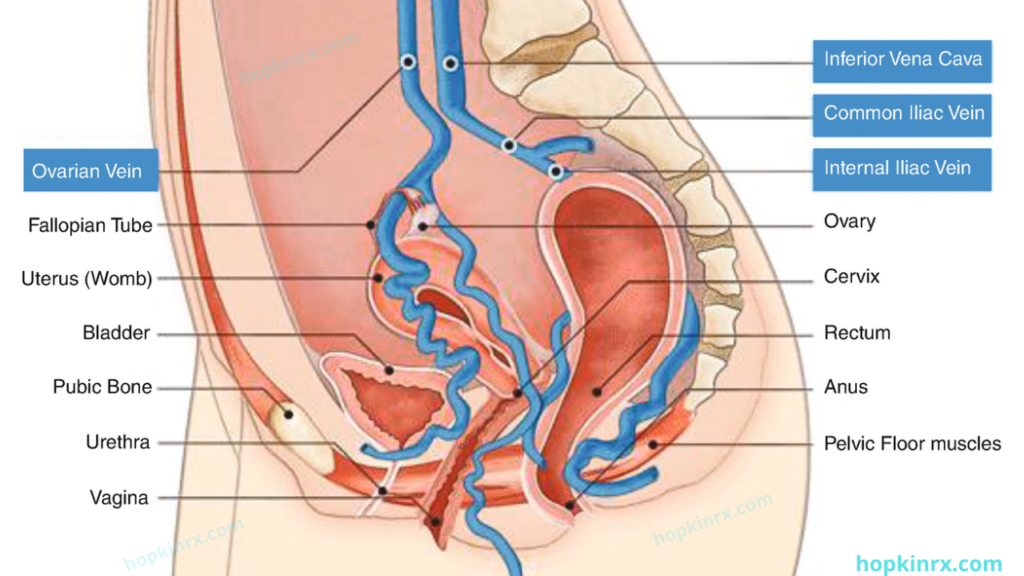Pelvic Congestion Syndrome: Causes, 6 main Symptoms, Diagnosis and Complete Treatment


What is Pelvic Congestion Syndrome?
Pelvic congestion syndrome is a continuous condition that influences the pelvic region or the lower part of your gut. Specialists believe it’s caused by issues with veins in that piece of the body.
Pelvic congestion syndrome can be very agonizing, enduring a half year or more. It’s not associated with your period and can be difficult to analyze.
What Causes Pelvic Congestion Syndrome?
Analysts are as yet learning. Yet, a few figure hormonal and actual changes during pregnancy might set off the development of strain in veins around the ovaries. Estrogen, a regenerative chemical that ladies make a greater amount of during pregnancy, can debilitate the veins nearby and make them extend.
What Are the Symptoms of Pelvic Congestion Syndrome?
The aggravation can keep going for quite some time and influence your everyday life. It’s generally just on one side.

Symptoms include:
- A dull, hurting torment in your pelvic region and lower back
- Torment that deteriorates during your period
- Crabby or focused bladder that makes it difficult to control your pee
- Distress or torment during sex (dyspareunia)
- Swelling or engorged veins before the vagina
- Varicose veins on your upper thighs or butt
It could likewise be difficult to represent significant stretches of time.
Who’s at Risk for Pelvic Congestion Syndrome?
It for the most part happens to ladies of childbearing age somewhere in the range of 20 and 45. It’s more normal assuming that you have more than one youngster.
Other gamble factors include:
- Having a “tipped” or retroverted uterus
- Full leg veins
- Polycystic ovaries
- Hormonal issues
How Is Pelvic Congestion Syndrome Diagnosed?
Numerous things can set off pelvic agony, which can make it difficult for your doctor to know whether it’s pelvic clog disorder or something different. In the event that you have extreme pelvic torment, your doctor will run a few tests to preclude specific causes before they can affirm pelvic congestion syndrome.
These may include:
- Urine tests to check for bladder issues
- Blood tests to check for pregnancy, physically sent contaminations, sickliness, and different circumstances
- Pelvic ultrasound to search for developments in the pelvic region
- Doppler ultrasound to check bloodstream in the pelvic veins
- CT sweep or MRI for more nitty-gritty pictures
- Demonstrative laparoscopy to help preclude different purposes behind torment
- X-ray of the pelvic veins
To Know More About Vaginal Septums.
What Are the Treatments?
Treatment choices include:
- Drugs that discharge the chemical gonadotropin to impede ovarian capacity and straightforwardness torment
- Progestin chemical medications to ease torment
- Techniques to stop harmed veins (sclerotherapy or embolization)
- Medical procedure to take out harmed veins
- Medical procedure to take out your uterus and ovaries (hysterectomy)
Numerous ladies who’ve gotten embolization say their side effects improved.
When Should You See a Doctor?
Make a meeting with your doctor in the event that you notice side effects that don’t disappear. On the off chance that your pelvic agony gets so awful you can’t work, go to the trauma center. They’ll preclude whatever dangerous that might be causing your side effects. Assuming it’s pelvic blockage disorder, they’ll work with you to sort out which treatment is ideal.



